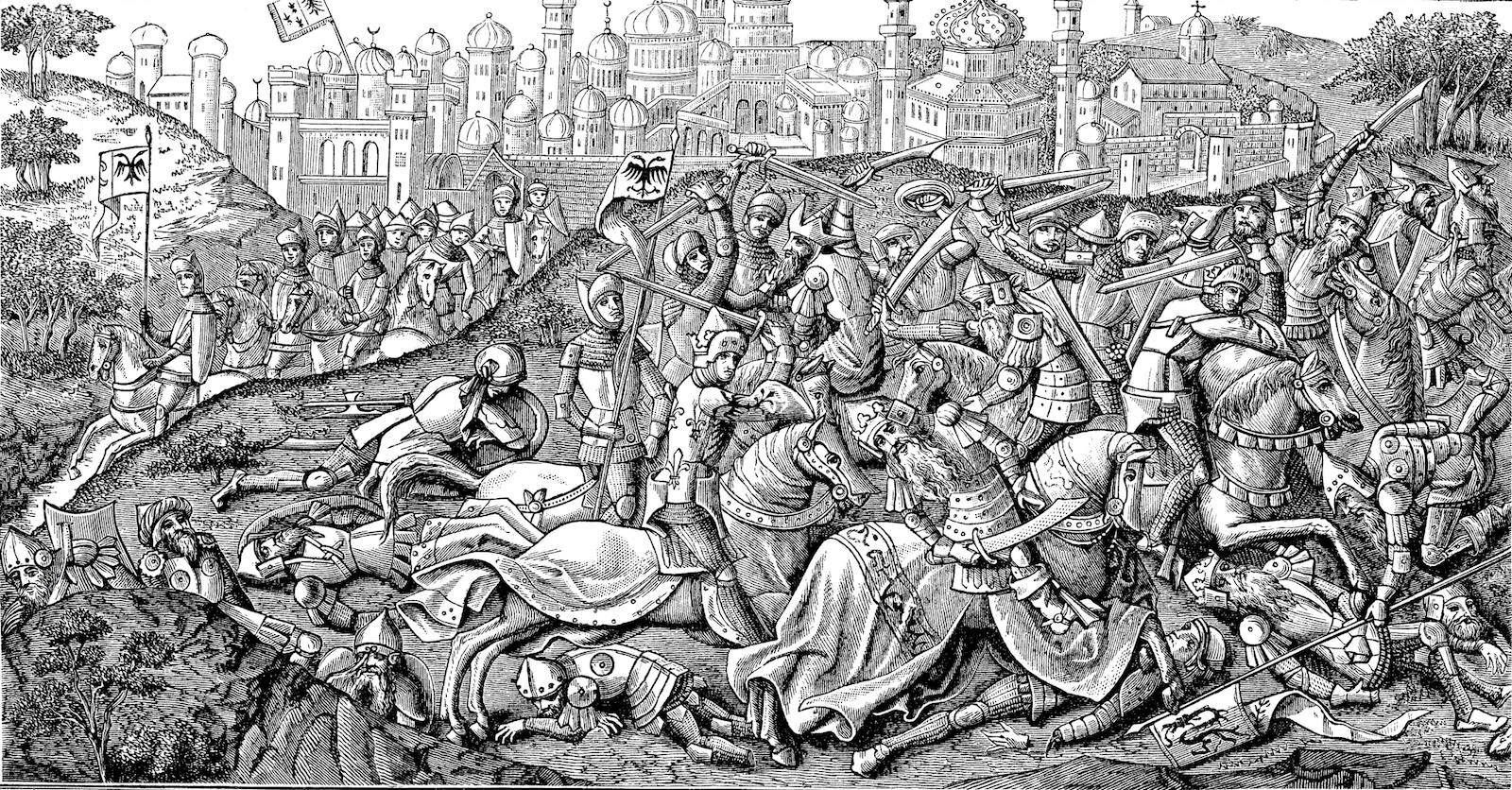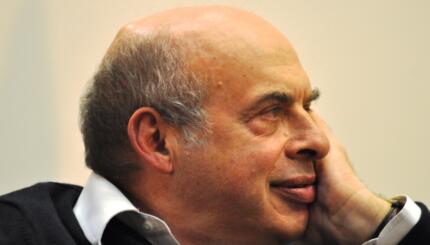The origins of the Christian Crusade to liberate the Holy Land are found in the spread of a warrior Asiatic tribe. In 1071, the Seljuk Turks defeated the Byzantine army at the Battle of Manzikert, thereby occupying all of Asia Minor, including Palestine. As stories of atrocities committed against Christian pilgrims filtered back to Europe, the Byzantine Emperor Alexius Comnenus appealed for help against the Seljuks. Pope Urban II called for a crusade against the Muslims in 1095. The stated goal of this crusade was to recapture the Holy Land and ensure safety for Christian pilgrims visiting sacred sites. However, many of the crusaders saw it as the perfect opportunity to serve God and simultaneously make a fortune in looting and ransom.
By 1096, a large army (25,000-30,000 men) was prepared for battle. They marched from southern France to Constantinople, where friction immediately arose between the Byzantines, who were unprepared for such an army, and the crusaders. In 1097, the crusaders left Constantinople and marched towards Jerusalem, which fell in 1099. The goal of the Crusade had been achieved. In celebration, the crusaders ruthlessly slaughtered all of the Muslim inhabitants of the city. The Jewish community in Palestine was forced to surrender to the new rulers, or face execution.
Devastation of the Jewish Rhineland
The events of 1096 temporarily stopped the intellectual and social activity of Ashkenazic Jewry. Urban II’s call for the Crusade did more than arouse interest in the armies that went to Jerusalem. Two other groups formed, both of which harmed the Jews: itinerant preachers and bands of German peasants. For the most part, the itinerant preachers were only interested in exploiting the Jews financially, demanding money for provisions. The peasant groups were much more dangerous. These bands coalesced around a charismatic leader and engaged in spontaneous violence against Jews.
In the early stages of the Crusade, these latter groups destroyed the Jewish communities in Speyer, Worms, and Mainz. There are accounts of these peasants ruthlessly slaughtering defenseless people, attacking Jews while in synagogue, and storming royal buildings to massacre the Jews.
With your help, My Jewish Learning can provide endless opportunities for learning, connection and discovery.
Jewish Martyrdom, Crusader Violence
These anti-Jewish attacks reveal an interesting trend in medieval Jewry: the willingness of the Jews to die for their faith. This act, known as kiddush ha-shem (sanctification of the Divine Name), was quite common, according to the three extant Hebrew chronicles of the First Crusade. These chronicles report Jewish parents killing their children in a manner similar to Abraham’s near sacrifice of Isaac and Jews examining knives to ensure that the killing of their brethren was done according to the laws of kashrut. In some instances, Jewish martyrs insulted their Christian attackers before being killed as a way of displaying their ultimate faith in God.
The Legacy of the First Crusade
Even though a large percentage of Rhineland Jewry was destroyed in these events, French Jewry escaped unscathed. The First Crusade did a great deal to expose how vulnerable Ashkenazic Jews were, but the status of the Jews in the eyes of royal authorities did not change. The authorities had not instigated the violence; in many instances, the authorities attempted to protect the Jews.
While the events of 1096 debilitated Rhineland Jewry, the First Crusade should not be seen as a watershed event that inevitably led to the decline of Ashkenazic Jewry. Several Rhineland Jewish communities were destroyed, but they rapidly rebuilt in the early 12th century. Jewish economic activity flourished; moneylending in particular, increased as subsequent crusading ventures needed cash. There was certainly no decline in intellectual creativity among Ashkenazi Jews; the study of law continued, although the focus shifted from Germany to northern France.
Jewish Travel to Palestine
Although Crusades continued over the next 300 years, subsequent crusades did not affect the Jews in the same way. After the events in the Rhineland in 1096, the Church realized the importance of reining in the popular armies and protecting the Jews. During the Second Crusade, the preaching of Bernard of Clairvaux, the moving spirit behind the Crusade, condemned anti-Jewish preaching and actions. However, Bernard’s rationale demonstrated that anti-Jewish sentiment was alive and well: For Bernard, the Jews were living witnesses to what happened to Jesus. Their dispersion throughout the world served as proof of their guilt and of Christian redemption.
Interestingly, the Jews of Europe were motivated by the journeys of Christians to the Holy Land, and aided by the increased maritime transportation between Palestine and Europe, to make a greater number of pilgrimages themselves. For example, “The Aliyah of Three Hundred Rabbis” occurred in 1211. This emigration of several hundred rabbis from Western Europe (mostly France and England) marks the beginning of an active period of aliyah (immigration to the Land of Israel) that continued through the 13th century.
Ashkenazi
Pronounced: AHSH-ken-AH-zee, Origin: Hebrew, Jews of Central and Eastern European origin.



